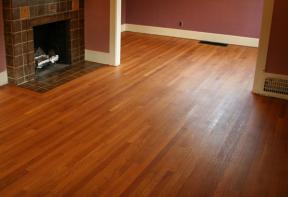What you need to know about wood finishes
Master that last crucial step in furniture building with this complete guide
From hand-cut dovetails to screw-together joinery, amateur woodworkers and DIY enthusiasts use a wide range of skills. But there’s a common line every project must cross before it’s done: the finish line. Finishes are necessary to protect and beautify most woodworking projects, yet the choices can be bewildering and application methods differ from one product to the next. Getting the finish right is no chance affair.
I’ve met many a hobbyist who had built a stunning project but was terrified to embark on the finishing journey, and sometimes with good reason. It takes just one failed attempt to make the “unfinished” look like a tempting option, but a little knowledge goes a long way.
Although the many names of finishing products can be confusing, most belong to one of four groups: straight oils, oil/varnish blends, varnish and water-based finishes. Each has its own characteristics and application methods. Most finishes fall into one of these groups, with the exception of shellac and lacquer. Look for the characteristics of each group. As for application methods, all of these products can be applied with ordinary hand-finishing methods. For the perfectionists among you, see “Finishing the Finish”, page 3. With a little extra time and elbow grease, you can make the difference between a good finish and an outstanding finish.
Straight oils
The straight oils category includes finishes such as pure tung oil, raw and boiled linseed oil, mineral oil and walnut oil. These are penetrating finishes: they don’t build a film on the wood. Although oil finishes don’t provide any real scratch or scuff resistance, the lack of film can be an advantage. On a cutting board, for example, a film finish would crack and peel. Small bits of finish would mix with your food, raising questions of food safety.
Choose a straight oil primarily for heavy-use items that are subject to cutting and pounding. This includes cutting boards, butcher’s blocks, knife blocks and workbenches. These kinds of items can be recoated with more finish as needed. My workbench is finished with many coats of tung oil, and I add another coat each year when I close my shop down over Christmas.
Straight oils are also suited for decorative tems that won’t see any abuse at all, such as sculpture or turnings. Oil finishes leave the wood looking natural, with a matte finish–wonderful on “art” pieces. But they aren’t protective enough for most furniture, and can really collect dirt and grime on regularly handled items.
For food contact safety on projects such as cutting boards, stick to tung, walnut or mineral oil. Walnut and mineral oil will remain greasy to the touch because they don’t fully cure, but they are food-safe. Tung oil isn’t pure unless the can says “pure” or “100%.” It’s also food-safe; each coat needs several days to dry. Don’t forget about nut allergies with respect to walnut and tung oil; tung oil comes from a Chinese nut. Where nut allergies are an issue, mineral oil is the safest choice for food contact. You can pick up a bottle of light mineral oil from your local drugstore.
Raw and boiled linseed oil are also frequently used for decorative items, or sometimes as a first coat underneath other finishes, such as oil-based polyurethane. Raw linseed oil isn’t often used since it can take a full week to dry. But boiled linseed oil has added metallic driers that speed up the drying time.
Applying oil finishes is easy: simply swab on a liberal amount with a rag in any direction you want. Circles and figure eights are fine. Use a foam roller to cover large areas. Let the oil soak in for about half an hour (they all dry slowly) and then wipe off the excess with a cloth, rubbing in the direction of the wood grain.
Jump to a section
- Page 1 : Finishes are necessary to protect your projects
- Page 2 : Applying curing oils and varnish blends
- Page 3 : Water-based finishes
- Page 4 : Various finish options and their properties
- Page 5 : Tools you will need
To leave a comment, please log in












No comments